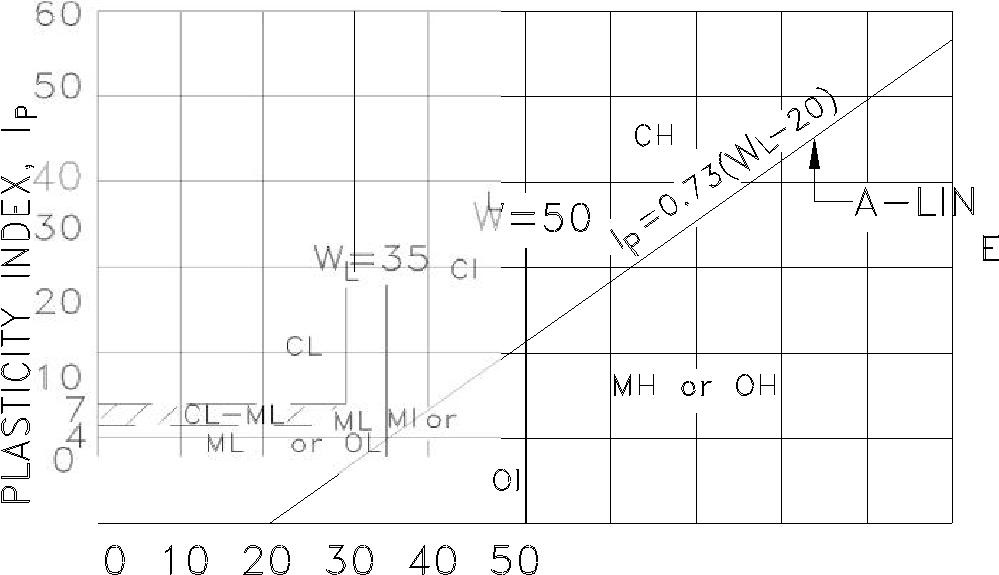Chapter: Civil : Soil Mechanics : Soil Classification And Compaction
Soil Classicification

Soil Classicification
Background and Basis of Classification:
The Geotechnical Engineers/Agencies had evolved many soil
classification systems, over the world. The soil classification system
developed by Casegrande was subsequently modified and named as
'Unified Classification' system. In 1959, Bureau of Indian Standards adopted
the Unified classification system as a standard, which was revised in 1970.
According to BIS classification system, soils are primarily classified based on
dominant particle sizes and its plasticity characteristics. Soil particles
mainly consist of following four size fractions.
1 Broad classification of soils
1. Coarse-grained
soils, with average grain-size greater than 0.075 mm, e.g.,
gravels and sands.
2. Fine-grained
soils, with average grain-size less than 0.075 mm, e.g.,
silts and clays. These exhibit different properties and behavior but
certain general conclusions are possible
even with this categorization.
For example, fine-grained soils exhibit the property of 'cohesion'-bonding
caused by inter-molecular attraction while coarse-grained soils do not;
thus, the former may be said to be cohesive and the latter
non-cohesive or cohesion less.
Gravel : 80 - 4.75
mm
Sand : 4.75mm - 0.075mm (75 micron)
Silt : 75
- 2 micron
Clay : less than 2 micron
Particle size distribution of a
soil is determined by a combination of sieving and sedimentation analysis as
per procedure detailed in IS: 2720 (Part 4) - 1985 and
its plasticity characteristics are determined by Liquid Limit and Plastic Limit
as per procedure detailed in IS:2720 (Part 5) -1985.
2 Symbols used in Soil Classification:
Symbols and other soil properties used for soil classification
are given below. Brief procedure for Classification of soils has been explained
in tabular form and Flow Chart. Plasticity Chart required for classification of
fine grained soils has also been given.
Primary
Letter Secondary Letter
G : Gravel W : well-graded
S : Sand P : poorly
graded
M : Silt M : with
non-plastic fines
C : Clay C : with
plastic fines
P: Peat I : medium
plasticity
H : high plasticity
3 Other soil parameters required for soil
classification:
Cu : Coefficient of Uniformity = D60 / D10 .
Cc : Coefficient of
Curvature = (D30)2 / (D60 * D10) .
D60, D30 & D10 are particle
sizes, below which 60,30 and 10 percent soil particles by weight are finer than
these sizes.
Plasticity Index, PI = Liquid Limit (LL) - Plastic Limit ( PL).
Coarse-grained soils: Soils having fines ( particles of size
less than 75 micron) < 50%.
Fine grained soils: Soils having fines more than 50%.
4 Brief Procedure for soil classification:
Conduct Sieve analysis
and Hydrometer analysis
on soil sample
and plot particle
size gradation curve and determine
Cu and Cc.

Conduct liquid limit and plastic limit test on soil samples as
per procedure given fig
Based on above soil parameters, classification should be done
as per procedure explained in the following table/Flow Chart. The
classification should be done in conjunction with the Plasticity Chart given
below.

Broad categorization of soil type
The classified soil types shall
be grouped in four broad categories for the purpose of planning of works
(Blanket thickness requirement as indicated in bracket is for new
constructions. Planning for rehabilitation, if any, is to be done in
consultation with RDSO.)
a)Soils type A (not needing blanket):
![]()
Rocky beds except those, which are very susceptible to
weathering e.g. rocks consisting of shales and other soft rocks, which become
muddy after coming into contact with water.
Well graded Gravel (GW) Well
graded Sand (SW)
Soils conforming to
specifications of blanket material. b)Soils type B (needing 45cm thick
blanket):
Poorly graded Gravel (GP) having
Uniformity Coefficient more than 2. Poorly grade Sand (SP) having Uniformity
Coefficient more than 2. Silty Gravel (GM)
Silty Gravel - Clayey
Gravel (GM - GC). c)Soils type C (needing 60cm thick
blanket): Clayey Gravel (GC)
Silty Sand (SM)
Clayey Sand (SC)
Clayey Silty sand (SM-SC)
Note: The thickness of blanket on
above type of soils shall be increased to 1m, if the plasticity index exceeds
7.
d)Soils type D (needing 1m thick
blanket): Silt with low plasticity (ML)
Silty clay of low plasticity
(ML-CL) Clay of low plasticity (CL)
Silt of medium plasticity (MI)
Clay of medium plasticity (CI)
Rocks which are very susceptible to weathering
Soils having fines passing 75
micron sieve between 5 & 12%, i.e. for soils with dual symbol e.g., GP-GC,
SW-SM, etc., thickness of blanket should be provided as per soil of second
symbol (of dual symbol)
Related Topics